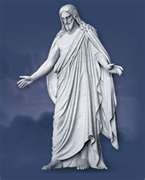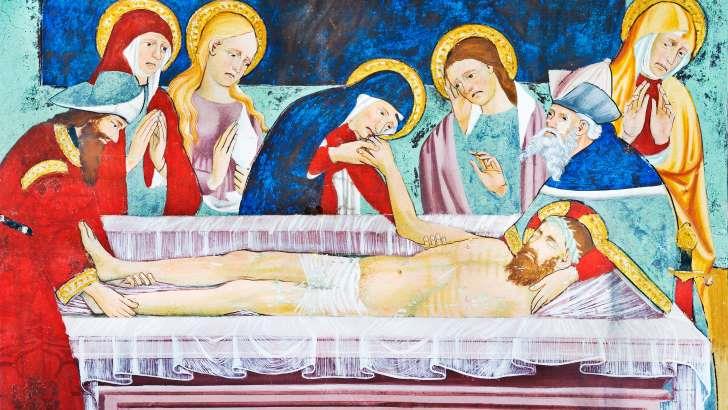









Everything For The Detectorist - Reference & Timelines




Powered By Sispro1


[1-17]
United Kingdom - World Biblical Events
The British Library is also a good source to fill in the gaps of history
For an external link click onto the banner below to go to the British Library.
For an external link click onto the banner below to go to the British Library.
Click


Designed by Nigel G Wilcox
Copyright All Rights Reserved by Nigel G Wilcox E-Mail: ngwilcox100@gmail.com
The Paragon Of Metal Detecting
& Archaeology
& Archaeology
Archaeologists Just Got Closer to Proving the Location of Jesus’ Tomb

© Marc Dozier/Getty
This week National Geographic announced that, for the first time, the mortar from the tomb of Jesus at the Church of the Holy Sepulcher had been scientifically dated. The tomb itself, they reveal, was built in the fourth century. The evidence confirms the traditional story that Constantine built the first Christian church there around 325 CE. But does the mortar cement the Gospel story?
A little over a year ago scientists and archaeologists entered what the majority of Christians believe is the tomb of Jesus. More importantly the renovation of the Edicule (the shrine that housed the tomb) in the Church of Holy Sepulcher meant that the marble cladding that covered the tomb was removed for the first time since the sixteenth century.
What they found beneath the cladding on October 26, 2016, was an older, broken marble slab marked with a cross. They then discovered that it was set directly on top of a limestone slab, or burial bed.
For believers, this limestone surface might be the place where Christ was laid between his death and resurrection. According to the Gospels, Jesus body was removed from the cross and placed in the tomb of Joseph of Arimathea, a wealthy Jew who participated in the trial of Jesus and inexplicably offered the use of his burial plot for the condemned man. The historical accuracy of this event has been contested by New Testament scholar John Dominic Crossan, but the story of Jesus burial and resurrection became foundational for Christian tradition. For the past 1700 years the tomb, though vacant of its most illustrious guest, has symbolized Christ s triumph over death. [why vacant?]
In many ways and with apologies to St. Peter, the unoccupied burial slab in the tomb is the rock on which the Church was founded.
Christian tradition maintains that the first Christian religious structure was constructed here in the fourth century at the behest of the emperor Constantine. When his representatives arrived in Jerusalem they were directed to a Roman temple dedicated to Aphrodite/Venus. According to the fourth century Christian historian Eusebius, the Romans had built the temple there some 200 years earlier in order to squelch Christian interest in Jesus. Constantine had the temple leveled and late antique excavations revealed a limestone cave containing a tomb. The top of the tomb was then removed in order that visitors could look into the tomb and a shrine was constructed around it.
The problem with the version of events told by ancient writers like Eusebius is that they often include miraculous details and events that seem more likely to be legends than facts. Eusebius himself only vaguely mentions some sign that the tomb was Jesus but others narrate elaborate miracles. As a result, modern historians treat these sources with care and often regard them more as evidence for political jostling among late antique religious leaders than straightforward accounts of how things happened.
But even if Constantine got the location of the tomb right, there were many opportunities since then for the site to be lost: it was subsequently destroyed, rebuilt in the eleventh century, replaced by a Crusader Chapel, and then burned down and was rebuilt again in the nineteenth century.
It was very possible, therefore, either that medieval era Christians had been building in the wrong place, or that the limestone slab had been placed there in the Crusader period. That the marble slab on top of it was cracked and broken might have suggested an earlier date, but there was no hard evidence for a Roman era construction. Reports from nineteenth century reconstruction exist, but they are incomplete and do not provide exhaustive reports of what happened there.
Now optically stimulated luminescence (OSL) testing of mortar samples from the southern wall of the burial cave have dated the layers of construction there to 345 and 1570. The sixteenth century building work was already known, but this is the first evidence of a Roman period shrine. Antonia Markopoulos, director of the restoration project, plans to publish these results in a forthcoming issue of Journal of Archeological Science: Reports. She toldNational Geographic that [these] mortars not only provide evidence of the earliest shrine on the site [they] also confirm the historical construction sequence of the Edicule. British archaeologist Martin Biddle, author of The Church of the Holy Sepulchre, agreed, remarking that [the] date is spot-on for whatever Constantine did.
So far there is no organic material in the tomb that could allow us to press further. Fredrik Hiebert, a National Geographic Archaeologist-in-Residence who represented Geographic at key moments throughout the excavation, told The Daily Beast that There was no obvious blood or organic remains. The dust above the chiseled limestone burial bed was collected by the church for future analyses, and has yet to be studied.
All of this gets us back to Constantine and to the construction of the original Church of the Holy Sepulcher in Rome around 325 CE. But does this get us closer to the death of Jesus nearly three hundred years earlier? The earlier the structure was built the more likely it is to be the authentic tomb so we have inched our way back several centuries, but the critical ground between Constantine and Jesus has yet to be broached. Despite the sensationalism of recent news reports, few have seriously doubted that the current structure sits atop Constantine s shrine, they simply couldn t prove that it did.
The real questions are: what happened in the three centuries between Jesus and Constantine; how accurate were Constantine s sources; and how powerful was ancient collective memory when it came to recalling the location of a tomb Jesus spent only a brief period of time inhabiting? For centuries after the Easter event, followers of Jesus didn t seem to visit or talk about visiting the (temporary) tomb of Jesus. Perhaps this is because there was a large pagan temple on the site, or perhaps it is because late first and second century Christians weren t that interested in this kind of thing. As Princeton historian Peter Brown has written, the practice of visiting and venerating the graves of the deceased only began to take off among Christians in the third century and pilgrimage only became popular in the fourth.
In either case it takes something other than science to connect the Church to Jesus; it takes faith.
A little over a year ago scientists and archaeologists entered what the majority of Christians believe is the tomb of Jesus. More importantly the renovation of the Edicule (the shrine that housed the tomb) in the Church of Holy Sepulcher meant that the marble cladding that covered the tomb was removed for the first time since the sixteenth century.
What they found beneath the cladding on October 26, 2016, was an older, broken marble slab marked with a cross. They then discovered that it was set directly on top of a limestone slab, or burial bed.
For believers, this limestone surface might be the place where Christ was laid between his death and resurrection. According to the Gospels, Jesus body was removed from the cross and placed in the tomb of Joseph of Arimathea, a wealthy Jew who participated in the trial of Jesus and inexplicably offered the use of his burial plot for the condemned man. The historical accuracy of this event has been contested by New Testament scholar John Dominic Crossan, but the story of Jesus burial and resurrection became foundational for Christian tradition. For the past 1700 years the tomb, though vacant of its most illustrious guest, has symbolized Christ s triumph over death. [why vacant?]
In many ways and with apologies to St. Peter, the unoccupied burial slab in the tomb is the rock on which the Church was founded.
Christian tradition maintains that the first Christian religious structure was constructed here in the fourth century at the behest of the emperor Constantine. When his representatives arrived in Jerusalem they were directed to a Roman temple dedicated to Aphrodite/Venus. According to the fourth century Christian historian Eusebius, the Romans had built the temple there some 200 years earlier in order to squelch Christian interest in Jesus. Constantine had the temple leveled and late antique excavations revealed a limestone cave containing a tomb. The top of the tomb was then removed in order that visitors could look into the tomb and a shrine was constructed around it.
The problem with the version of events told by ancient writers like Eusebius is that they often include miraculous details and events that seem more likely to be legends than facts. Eusebius himself only vaguely mentions some sign that the tomb was Jesus but others narrate elaborate miracles. As a result, modern historians treat these sources with care and often regard them more as evidence for political jostling among late antique religious leaders than straightforward accounts of how things happened.
But even if Constantine got the location of the tomb right, there were many opportunities since then for the site to be lost: it was subsequently destroyed, rebuilt in the eleventh century, replaced by a Crusader Chapel, and then burned down and was rebuilt again in the nineteenth century.
It was very possible, therefore, either that medieval era Christians had been building in the wrong place, or that the limestone slab had been placed there in the Crusader period. That the marble slab on top of it was cracked and broken might have suggested an earlier date, but there was no hard evidence for a Roman era construction. Reports from nineteenth century reconstruction exist, but they are incomplete and do not provide exhaustive reports of what happened there.
Now optically stimulated luminescence (OSL) testing of mortar samples from the southern wall of the burial cave have dated the layers of construction there to 345 and 1570. The sixteenth century building work was already known, but this is the first evidence of a Roman period shrine. Antonia Markopoulos, director of the restoration project, plans to publish these results in a forthcoming issue of Journal of Archeological Science: Reports. She toldNational Geographic that [these] mortars not only provide evidence of the earliest shrine on the site [they] also confirm the historical construction sequence of the Edicule. British archaeologist Martin Biddle, author of The Church of the Holy Sepulchre, agreed, remarking that [the] date is spot-on for whatever Constantine did.
So far there is no organic material in the tomb that could allow us to press further. Fredrik Hiebert, a National Geographic Archaeologist-in-Residence who represented Geographic at key moments throughout the excavation, told The Daily Beast that There was no obvious blood or organic remains. The dust above the chiseled limestone burial bed was collected by the church for future analyses, and has yet to be studied.
All of this gets us back to Constantine and to the construction of the original Church of the Holy Sepulcher in Rome around 325 CE. But does this get us closer to the death of Jesus nearly three hundred years earlier? The earlier the structure was built the more likely it is to be the authentic tomb so we have inched our way back several centuries, but the critical ground between Constantine and Jesus has yet to be broached. Despite the sensationalism of recent news reports, few have seriously doubted that the current structure sits atop Constantine s shrine, they simply couldn t prove that it did.
The real questions are: what happened in the three centuries between Jesus and Constantine; how accurate were Constantine s sources; and how powerful was ancient collective memory when it came to recalling the location of a tomb Jesus spent only a brief period of time inhabiting? For centuries after the Easter event, followers of Jesus didn t seem to visit or talk about visiting the (temporary) tomb of Jesus. Perhaps this is because there was a large pagan temple on the site, or perhaps it is because late first and second century Christians weren t that interested in this kind of thing. As Princeton historian Peter Brown has written, the practice of visiting and venerating the graves of the deceased only began to take off among Christians in the third century and pilgrimage only became popular in the fourth.
In either case it takes something other than science to connect the Church to Jesus; it takes faith.
Courtesy msn.com 03.12.17
5. Menu
Pages
Member NCMD
























